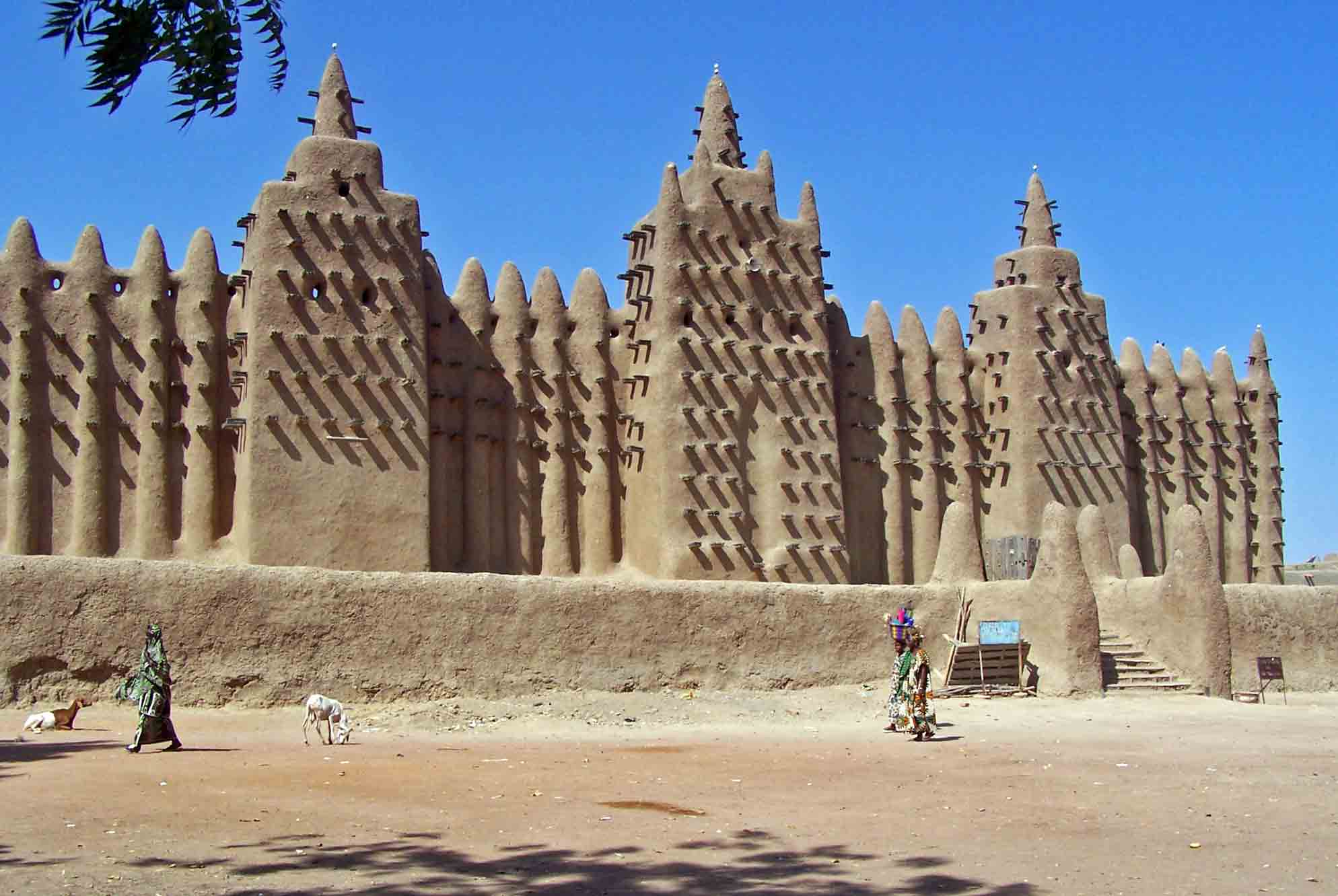
Beautifully crafted on the very soil on which it is rooted, Timbuktu’s oldest mosque has remained a center of attention and source of awe and wonder after several centuries.
The Djinguereber mosque was built in the Northern city of Mali. It was constructed by order of Emperor Moussa I over 700 years ago, and it still stands tall as the pride of the city, with very minor visible cracks to this day.
Built in mud bricks (a method in which layers of wet soil are continuously plastered onto limestone rocks, or bricks) the elegant earthen architectural structure has been devotedly maintained by the noble descendants of Emperor Moussa I over the years.
Dictating the pulse of the ancient city, the historical mosque plays host to five rounds of prayers each day, and holds an annual “restoration week” in which the classical structure is being maintained and put in perfect shape.
Adding to the awe surrounding this very unique type of structure is the strength and durability that it exudes. Maintaining that the mosque has not had a cause to be fixed in the last 9 years, the Djinguereber muezzin, Mahamane Mahanmoudou, reportedly said “we have not had to do major patching up since 2006 when the Aga Khan’s restoration programme began.”
“But I can see some small cracks now. We will have to do some work this year,” the 77-year-old mason-in-chief of the mosque, also added.
Though far from being the capital of any country, the Djinguereber mosque has turned the city of Timbuktu into a megalopolis in its own right ever since the Emperor built it on his return trip from Mecca back in 1327.
Emperor Moussa I, described as a very wealthy and generous man who freely dished out the finest Gold of West Africa on his multiple trips around the world, is said to have been so wealthy at the time, so much that he was proclaimed the richest man that has ever lived by Celebrity Networth back in 2012.
Underscoring the fact that the very affluent Emperor took so much pride and joy in the city of Timbuktu that he established the Djinguereber mosque there, retired headmaster and local historian, Salem Ould Elhadje said “he established administrative buildings here, centres of scholarship and universities. He brought an Andalucian architect from Cairo to build Djinguereber. The protruding beams are a reminder of European buttresses. The conical minaret recalls the Egyptian pyramids.”
“Thanks to Kankou Moussa Timbuktu ceased to be a vulgar centre of trade, in gold, slaves and salt, and became a centre of learning and religion. At the heart of it, Djinguereber was and remains a marvel of architecture where, when 2,000 people line up for prayers on a Friday, you feel the greatness of God and Islam in your soul,” the revered historian added.
An interesting thing to note about the The Djinguereber, is the fact that the historic mosque miraculously escaped being totally demolished by al-Qaida and Ansar Dine-led Islamic terrorists back in 2012 when they seized the town of Timbuktu burning thousands of ancient manuscripts and all the city’s mausoleums. This is remarkable considering the terrorists, who only slightly damaged the Mosque, don’t respect Timbuktu’s ancient form of Islam, in which magic and superstition tag alongside the teachings of the Qur’an.
Around August this year, the end of Timbuktu’s rainy season, the Djinguereber will receive a little maintenance touch, as the mason-in-chief, Mahanmoudou, will be gathering his team of 20 volunteer carpenters and masons for a briefing.
